They say seeing is believing but our understanding of chemical systems predominantly depends on second-hand observations and measurements. A colour change can suggest that a reaction has occurred, NMR peaks show how atoms in a structure are connected and enantiomeric excess measurements indicate the proportion of different enantiomers. But, chemists don’t usually see the molecules themselves.

X-rays and electrons
Crystallography is one of the few exceptions, turning those secondary measurements into a conclusive 3D structure. Single crystal x-ray diffraction – the most widely used of these techniques – has been known for more than 100 years and is the gold standard of structure identification across both chemistry and biology. When x-rays are fired at a crystal sample, its regular internal structure scatters light systematically and, by recording this diffraction pattern and working backwards, it’s possible to calculate the 3D structure of the molecule.
This structural insight is vital in fields like precision drug docking and enzyme engineering where spatial information plays a central role. However, as x-rays interact relatively poorly with matter, the technique requires large crystal samples, typically between 20–200μm, meaning the majority of small molecule and protein samples are unsuitable for analysis.
Electrons, on the other hand, interact with matter around 1000 times more strongly than x-rays, making it possible to analyse crystals just a billionth of the size. The caveat: due to sample damage only a single image can be collected from each crystal and interpreting the resulting diffraction patterns is much more complicated.
During detection, some of the information about the diffracted waves is lost and hundreds of individual datasets collected from different crystal samples must therefore be combined manually to infer the missing details and build a coherent structure. Meanwhile, the greater affinity of electrons for matter increases the number of secondary and tertiary collisions – a phenomenon known as dynamical scattering – meaning the relationship between diffracted beam intensity and molecular structure becomes blurred. Consequently, electron diffraction (ED) experiments are both difficult and time-consuming, with samples limited to two-dimensional crystals to avoid dynamical scattering.
MicroED is born
Membrane proteins are particularly difficult to crystallise and it was the frustration born of this awkward middle ground between x-ray’s impractically large crystals and ED’s 2D slices which led structural biologist Tamir Gonen to begin to blend these methods.
In 2004, his team used low-intensity ED to solve the structure of double-layered aquaporin crystals. But rather than combining images from different crystal samples, they calculated back from the diffraction pattern of a single sample using a method employed in x-ray diffraction to recover the waves’ missing information. The two-layer samples were technically 3D crystals, also casting doubt on the assertion that dynamical scattering limits electron diffraction to single-layer crystals. ‘The question then was, why weren’t other people able to solve 3D structures?’ says Gonen. ‘I started thinking maybe the limitation was how they collected and indexed the data.’
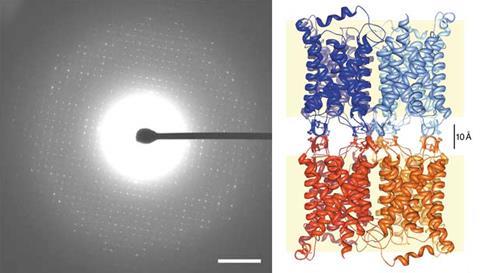
Indexing is one of the stages in diffraction pattern analysis and involves identifying the vectors (or axes) for each of the peaks in the diffraction data. This is a relatively straightforward process for x-ray experiments as the three axes are usually obvious from the curved patterns. But electron diffraction produces flat line-like patterns, making it impossible to reliably identify the third vector.
‘I realised that this is because of the experiment itself. The wavelength of x-rays is rather large so the scattering angle is also very large and that’s why you can parse out the vectors,’ explains Gonen. ‘In electron diffraction, the wavelength is much shorter and that means that the scattering angle is also very small. So even though we have a 3D crystal, essentially we’re taking a two-dimensional slice.’ However, if multiple 2D slices could be taken from a single crystal sample, each image would then be mathematically related, making it possible to find the third vector and determine the full 3D structure.
This insight was the catalyst for Gonen to develop a hybrid technique known as microED. Microcrystal samples around 50nm are mounted onto a rotatable stage in a transition electron microscope (TEM) set to diffraction mode. The stage is then rotated as a low-intensity electron beam is fired at the sample, with a fast camera recording the diffraction. ‘The technology that we developed in my group is this continuous rotation of the stage. Electron microscopes are not designed for movement so we built controllers to coordinate the movement of the stage with the camera recording,’ says Gonen.
Each video frame is then processed with adapted x-ray software to generate a high-resolution 3D structure. This is another key advantage of the technique according to Gonen. X-ray programs are extremely well-established and minor modifications, supported by almost every provider, enable existing software to interpret electron diffraction patterns, as well as x-rays.
Solving protein problems
The team debuted this new method in a proof-of-concept study in 2013, solving the structure of the known protein lysozyme and immediately attracting the interest of the structural biology community.
For David Eisenberg, a protein biologist specialising in neurodegenerative disease, microED proved the solution to a 10-year-old problem. Eisenberg’s team were working on the structure of Lewy bodies, protein aggregates implicated in neuronal damage in Parkinson’s disease, but the toxic core unit known as α-synuclein proved particularly troublesome to crystallise. ‘The crystals were so small, just 100nm, that there was no way to manipulate them or put them in an x-ray beam,’ says Eisenberg.
However, these tiny crystals were the perfect size for microED. After seeing Gonen’s 2013 paper, Eisenberg reached out and, within a week, the elusive structure of α-synuclein had been solved, marking the first unknown protein structure determined by this technique.
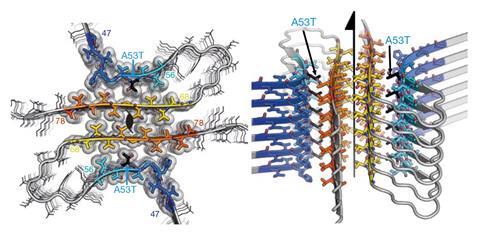
In the years since, microED has been used to solve a number of other challenging protein structures but there are still several practical issues to address before the technique becomes mainstream across biology. In particular, the complex sample preparation step requires a high level of technical expertise.
Proteins naturally carry water within their structure. But the electron microscope must operate in a vacuum to avoid background scattering by air, meaning the experimental conditions risk dehydrating the protein and collapsing its structure. ‘We’ve been freezing the crystals – when it’s in a thin layer of ice, that protects it from the vacuum,’ says Gonen. ‘But then you come into this tricky area where, what’s the best way to freeze your crystal? Too thick and the electrons will not be able to penetrate. Too thin and you might crush your crystal.’
Non-biological samples are more straightforward to prepare and Gonen believes this technique could be a particularly useful addition to the small molecule characterisation toolbox.
Probing purity and polymorphs
Small molecules are generally easier to crystallise than proteins, but the majority still never form crystals of sufficient size for conclusive x-ray analysis. MicroED therefore offers the potential to drastically increase the scope of molecules suitable for structural analysis, giving chemists access to hundreds more data points with relatively little effort. ‘With microED, we can obtain structures for around 95% of small molecules,’ says Gonen. ‘These structures are typically very high-resolution, around the 1Å mark, so we can see individual atoms and know precisely what the hydrogen bonding networks are. This type of information can then be fed into machine learning and precision drug docking.’
Crucially, this technique also detects crystal forms (polymorphs) present within a single pure sample, something which has extremely important implications for the pharmaceutical industry. Drug polymorphs can have very different physical properties which directly affect the bioavailability and, consequently, the efficacy and safety of the final drug product. The distinct forms of an active compound are also eligible for separate patent protection so companies have an economic interest in identifying polymorphs at an early stage. The high resolution and small crystal size makes microED a sensitive and quick alternative to x-rays which many in the industry are beginning to explore.
But beyond identifying mixtures of crystal structures, Gonen’s team has recently written software enabling them to analyse product mixtures. The new code collects microED data from each crystal in a sample, analysing the datasets separately and providing an estimation of the mass of individual crystals. ‘We can combine this to do pretty thorough compositional analysis. If you had a mixture of an unknown, you could determine what’s in it and how much of each one without any prior knowledge,’ says Gonen. The group demonstrated this new capability on pharmacy samples of aspirin and paracetamol with the final analysis closely matching the composition listed by the manufacturer.

Access denied
But despite the manifold advantages of this technique for the chemistry community, microED is still almost unheard of amongst small molecule chemists. ‘Access is still a big problem,’ concedes Gonen. The expensive and specialist equipment – the TEM – combined with the technical knowledge required to take microED measurements means the technique is almost impenetrable to those not already experienced in crystallographic methods. ‘We’ve written scripts that allow people to set up the microscope and collect the data automatically, but it’s the high level of expertise required for the equipment that’s the limitation,’ says Gonen.
This access problem is the key factor preventing researchers in other areas exploring the potential of the technique, says supramolecular chemist Bernd Schmidt. Supramolecular chemistry occupies an awkward middle ground where characterisation is concerned. The large symmetric structures give deceptively simple NMR spectra, while the weak bonds can lead to complex fragmentation by mass spectrometry. X-ray crystallography would be the ideal technique but the innate properties of supramolecular compounds limit the efficacy of this method.
‘Handling and growing supramolecular single crystals is very challenging. Our compounds are intrinsically not stable because they are dynamic covalent compounds,’ says Schmidt. ‘We have these huge molecules with huge cells where solvent or guests are ordered or disordered within the pores which intrinsically leads to poor diffraction at lower angles and poor-resolution images.’
Schmidt believes microED would offer an ideal solution to this dilemma. The small crystal size and rapid acquisition times could dramatically streamline workflows, allowing researchers not only to more effectively characterise final materials, but to understand the topology and geometry of samples at an earlier stage and possibly even scan reaction mixtures to track the self-assembly process.
However, at present, he can only speculate how the technique could enhance his research. ‘The TEM machines that are available at universities are fully used already for other purposes, so there’s very limited availability to play around. The entry barrier also regarding the knowledge and software is very high,’ he says. ‘I think there’s a big explosion about to happen when somebody fuses this altogether into something accessible and user-friendly.’
Automating for accessibility
These missed opportunities are exactly what inspired analytical instrumentation company Rigaku to launch the XtaLAB Synergy-ED in 2021. ‘We saw [microED] as an up-and-coming technique that would be useful to the same group of scientists that we currently sell x-ray equipment to,’ explains Joe Ferrara, chief scientific officer at Rigaku. ‘Our model was that with just a few minutes of training, someone would be able to walk up to the XtaLAB Synergy-ED and collect data right away.’
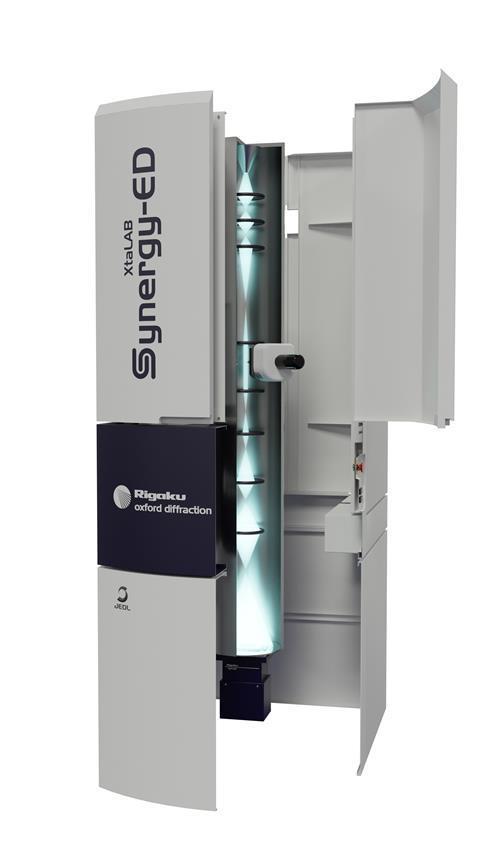
Unlike the adapted TEMs used by academics like Gonen and Eisenberg, the XtaLAB Synergy-ED is specifically designed for microED experiments, with automated data collection, image processing and analysis, making the technique accessible to a complete crystallography novice. ‘It’s taken microED from a research project and developed it into a commercial tool,’ says Mark Benson, head of single crystal business at Rigaku. ‘The potential market is enormous, but very few scientists are aware of how electron diffraction could help them.’
Awareness is the key factor driving demand, says Ferrara, with early interest coming largely from the MOF/COF community who already employ electron diffraction. In the years since, Rigaku have received inquiries the pharmaceutical and battery industries and more niche applications such as sample analysis for museum collections.
The challenge now, says Benson, is convincing grant reviewers of microED’s potential and ensuring the necessary funding is in place to enable departments and companies to invest in this technology. New machines begin at around €1.5 million (£1.3 million), roughly equivalent to a mid-range NMR machine, and last year Rigaku supplied two machines to the world’s first dedicated national microED service at the UK’s National Electron Diffraction Facility in Southampton.
Ultimately, the hope is that microED could become a routine part of chemical analysis, rather than a specialist technique. ‘In five to 10 years the vision would be that every major university will have one of these instruments,’ says Ferrara.


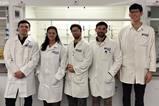





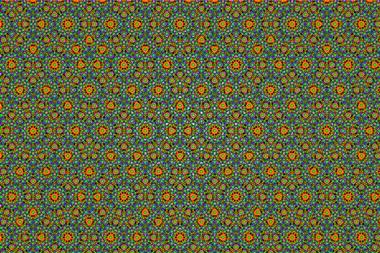
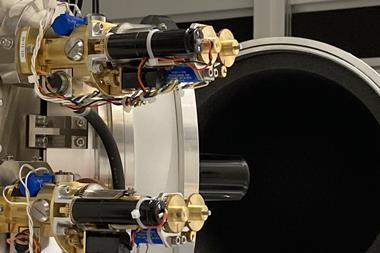



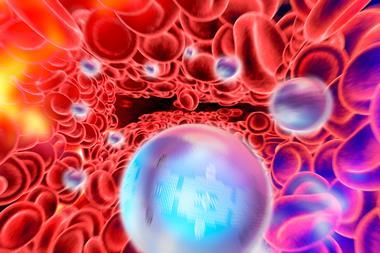



No comments yet